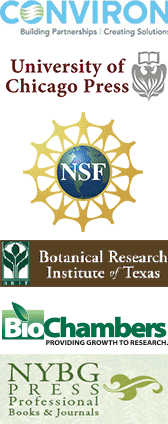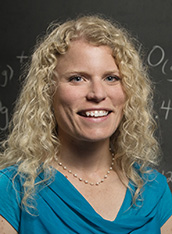Speaker Info
Botany 2015 Featured Speakers
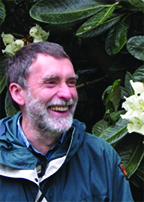 |
|
|
Ken Thompson did his PhD with Phil Grime at Sheffield University in the 1970s and returned to Sheffield in 1990, where he has been ever since, eventually becoming senior lecturer in ecology, before recently retiring.He has broad interests in plant ecology, has published over 150 papers, and is senior editor of the British Ecological Society journal Functional Ecology. He is the author (with Jan Bakker and Renée Bekker) of ‘The Soil Seed Banks of North-West Europe: Methodology, Density and Longevity’ (1997, Cambridge University Press) and (with Mike Fenner) of ‘The Ecology of Seeds’ (2005, Cambridge University Press).Ken is increasingly interested in the science of gardening, and has published four popular gardening books. He writes a gardening column for the Daily Telegraph and frequently speaks to gardening clubs and societies. In 2010 he published a popular book about biodiversity: ‘Do We Need Pandas? – the uncomfortable truth about biodiversity’ (Green Books). A new book on alien species (Where Do Camels Belong?), published (in Canada) by Greystone Books, came out last year, and a book of collected gardening columns is due later this year.
|
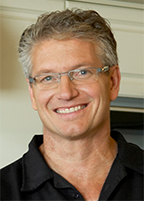 |
|
|
Jim Hole grew up in his family’s horticultural business and has been co-owner of Hole’s Greenhouses and Gardens Ltd. in St. Albert, Alberta, Canada since 1979. Jim has a Bachelor of Science degree in Agriculture (Plant Science major) from the University of Alberta, is a Certified Professional Horticulturist with the American Society for Horticultural Science, a Certified Arborist with the International Society of Arboriculture and a Certified Pesticide Applicator. Jim is a highly sought after professional speaker with the Speakers Bureau of Alberta and loves to share his passion on both the science of growing plants and the business of growing plants. In addition to writing bestselling books, Jim is a gardening columnist with the Edmonton Journal, Saskatoon Star-Phoenix, and CBC radio. Jim’s current challenge is managing the 242,000 square foot Enjoy Centre. The Enjoy Centre is a multifaceted facility that includes greenhouses, a wellness spa, restaurant, bakery, kitchen tool store, food store and deli, wine store and convention space. |
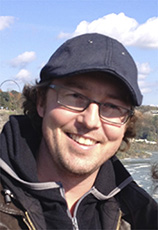 |
Darrell Desveaux is an associate professor in the Department of Cell and Systems Biology at the University of Toronto and Canada Research Chair in Plant-Microbe Systems Biology. He carried out his Ph.D. research on plant defense gene regulation in the laboratory of Normand Brisson at the University of Montreal, where he biochemically characterized the Whirly family of plant ssDNA-binding proteins and their role in plant immunity. He then joined the laboratory of Jeff Dangl at the University of North Carolina-Chapel Hill, where he carried out structure/function studies of Pseudomonas syringae type III secreted effector proteins. His current research continues to focus on the study of type III effector proteins, using them as molecular probes to study plant immunity. Since these effector proteins are remarkably efficient suppressors of host defense responses, identifying their mode of action in plant cells promises to reveal fundamental aspects of plant immunity. Additional information about research in the Desveaux group can be found at http://desveaux.csb.utoronto.ca. |
||
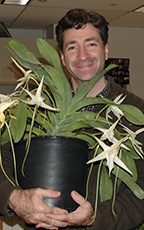 |
Robert Raguso grew to appreciate chemically mediated plant-insect interactions during his undergraduate studies of butterflies at Yale University. He explored the genetics, physiology and ecology of floral volatiles for his doctoral research at the University of Michigan, and insect olfaction and behavior, along with the phylogenetic mapping of chemical floral traits for his postdoctoral work at the University of Arizona. During the past 20 years, he has promoted the integrated study of floral scent by training numerous colleagues and their students, writing several reviews on the subject and founding the Gordon Research Conference on plant volatiles. |
||
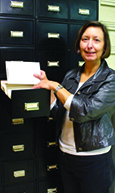 |
Lynne Sigler is currently Professor Emeritus and Adjunct Professor (Science) at the University of Alberta. She began her career at the University of Alberta Microfungus Collection and Herbarium (UAMH) in 1969 and found the work of curating and cataloguing microbial fungi so intriguing, she stayed for 44 years, and continues as a volunteer. The Microfungus Collection, located at the Devonian Botanic Garden, holds the largest North American collections of biomedical (pathogenic, opportunistic, allergenic, toxigenic), plant root associated mycorrhizal (ecto‐, ericoid, orchid) and endophytic fungi. Lynne’s research on these fungi resulted in numerous book chapters, two books and over 120 refereed articles. She also taught courses and workshops on fungi affecting human and animal health and provided consultancy to public health and diagnostic laboratories. |
||
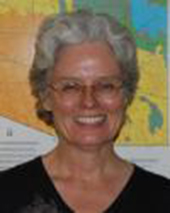 |
Martha Hawes got hooked on mysteries of the root cap as a graduate student at the University of Kentucky, and never quite got over it. Efforts to use the cells that separate from the cap as a tool to measure interactions between oat cell walls and a host-specific toxin produced by Cochliobolus victoriae"led to a shocking discovery: Despite the existing dogma that these cells die and \'slough\' off,* facilitating root tip penetration into the soil and providing a nonspecific source of nutrients for soilborne microorganisms, cell viability in simple solutions (e.g. water) was 100% and stayed that way for weeks. Extended visits to the library archives eventually revealed that Dr. Knudson of the Cornell Laboratory of Plant Physiology had already documented this phenomenon in 1919, in the American Journal of Botany (volume 6, page 309-310): Not only were detached cells from root caps of corn and field pea in hydroponic culture 100% viable after >2 months, but they also continued to produce copious amounts of extracellular slime. The idea that plants could expend so much energy to program the detachment of living cells with sufficient resources to survive and export material for months made no sense. An convergence of discovery during the last decade of research on animal and plant immune systems has finally revealed that it does make sense after all: Like white blood cells, border cells export a DNA-based matrix that attracts and immobilizes pathogens and thereby prevents invasion of the root apex. Since the root apex influences architecture of the whole plant, its protection warrants significant energy expenditure. The root cap meristem in plants functions in the manner of bone marrow in animals, responding to signals from pathogens by producing specialized root \'border cells\' that deliver extracellular traps whose components can kill the invader. The possibility that research to define this cross-kingdom underpinning of cellular defense will yield new approaches to control plant and human disease will be of interest in future studies. (*Synonyms (Webster\'s thesaurus) for \'sloughed\' are \'putrid\' and \'gangrenous.\') |
||
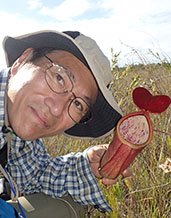 |
|
Mitsuyasu Hasebe is a professor in Division of Evolutionary Biology, National Institute for Basic Biology (NIBB) and a dean of SOKENDAI (The Graduate University for Advanced Studies). He is working as program officers in Japan Society for the Promotion of Science and Japan Science and Technology Agency. He is a president of Society of Evolutionary Studies, Japan. His mother says that he was interested in plants before 1 year old. He inferred monophyly of extant gymnosperms and familial relationship of ferns in his PhD under Prof. Kunio Iwatsuki. He stayed in Jody Banks lab in Purdue University and found floral homeotic genes in the fern Ceratopteris. He established evodevo studies in NIBB using Physcomitrella and worked as a member of genome consortia of Selaginella and Physcomitrella. He is interested in the evolution of complex and novel traits including land plant development, carnivorous plants, seismonastic movement of Mimosa pudica, and more. Please enjoy his botany blog (http://www.nibb.ac.jp/plantdic/blog/). |
|
|
|
Gretchen Adams received her undergraduate degree in Teaching of Chemistry from the University of Illinois, Urbana-Champaign (UIUC) in 1998. She earned her Masters of Science in Teaching of Chemistry from University of Illinois-UC in 1999. She joined the Chemistry Department at UIUC in January 2003. Prior to this, Gretchen taught high school science in Iowa for four years. In addition to teaching chemistry courses with the General Chemistry division, she directs the Chemistry Merit Program for Emerging Scholars and serves as the Director of Undergraduate Studies. Her Teaching Philosophy: "The important thing is not to stop questioning. Curiosity has its own reason for existing." Albert Einstein |
||
 |
Dick Olmstead obtained his Ph.D. at the University of Washington in 1988. He returned to join the faculty in 1996 and is now Professor of Biology and Herbarium Curator at the Burke Museum. His research on phylogenetics of Lamiales and Solanales has led him to fieldwork and collaborations with botanists around the world and to his current emphasis on patterns of diversification among major clades in the Neotropics. |
- Need a roommate to share expenses - use our roommate matching service
- Thank you for your interest in volunteering at Botany 2015. As of right now all students chosen to volunteer have been contacted. If you have any questions, please contact Kathryn Bornhoeft at kathryn@botany.org.
- Sign up for WS 9 - Professional Development Workshop: Graduate School, How to Apply and What to Expect
- Don't forget to sign up for TE 5 - Careers in Botany: Interactive Career Panel & Luncheon and TE 11 Student Social and Networking Event. Sign back into the registration site and add them in!
